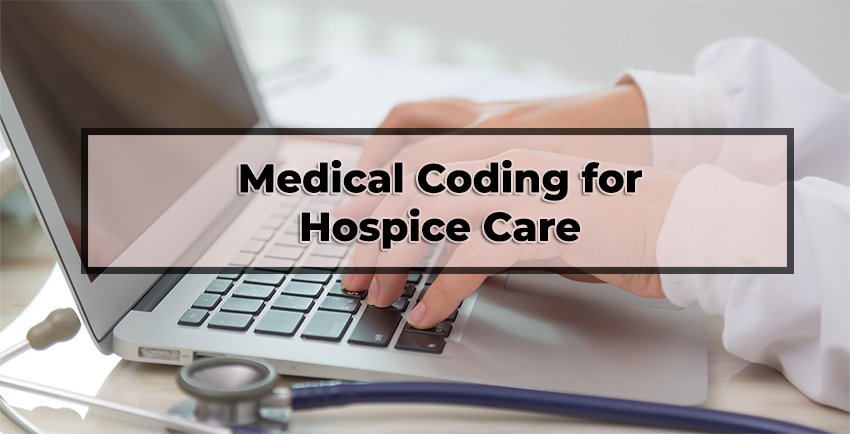Medical Coding for Hospice Care
Hospice care is designed to provide compassionate care to patients with terminal illnesses, where the focus shifts from curing the illness to enhancing the quality of life. This care model prioritizes symptom relief, emotional support, and holistic care, ensuring that patients spend their final days in comfort and dignity. Hospice care can be provided in various settings, such as the patient’s home, a hospice facility, or even within a hospital, depending on the patient’s needs and preferences. Hospice services typically include medical, psychological, and spiritual care, with a primary goal of relieving pain and managing symptoms.

Accurate medical coding plays a crucial role in hospice care, ensuring that the services provided are fully documented and that healthcare providers receive appropriate reimbursement. The complexity of hospice care demands precision in coding, as coders must account for a wide range of services, including symptom management, nursing visits, emotional counseling, and more. By utilizing the correct CPT (Current Procedural Terminology) and ICD-10-CM codes, coders can ensure that every aspect of a patient’s care is reflected accurately in medical records, while also complying with payer requirements and regulatory guidelines.
Key Components of Hospice Care Coding
Hospice care involves a b cv diverse set of services tailored to the unique needs of terminally ill patients. Coders must understand the breadth of services involved to document them correctly.
Pain and Symptom Management:
A primary aspect of hospice care is the management of physical symptoms such as pain, nausea, breathlessness, and anxiety. Coders must document the use of medications like opioids, palliative radiation therapies, and other pain-relieving interventions.
For example, the administration of opioids for pain control would require a CPT code for the medication infusion or injection, depending on the delivery method. Symptom management through interventions like oxygen therapy or non-invasive ventilation also needs appropriate coding.
Nursing Visits and Assessments:
Nursing care forms the backbone of hospice services, with nurses frequently visiting patients to assess their condition, administer medications, and monitor symptoms. Every nursing visit must be coded appropriately, using specific codes that reflect the level of care provided.
For example, home health visits are coded differently based on the type of service provided, such as routine check-ups or emergency care. Coders must ensure that every visit, whether for medication administration, wound care, or symptom monitoring, is accurately documented.
Emotional, Spiritual, and Psychosocial Support:
Hospice care goes beyond physical treatments and addresses the emotional, spiritual, and psychological needs of both patients and their families. Social workers, counselors, and chaplains are often involved in providing grief counseling, spiritual guidance, and emotional support.
Coders must accurately capture these services using appropriate codes. For instance, counseling sessions provided by social workers may be documented using CPT code 90832 for a 30-minute individual counseling session. Similarly, chaplain visits or spiritual care services should also be documented, as they are a vital part of hospice care.
Special Considerations in Hospice Care Coding
Hospice care coding involves a few unique challenges that coders must be aware of, especially when documenting the primary and secondary diagnoses that qualify the patient for hospice care.
Terminal Diagnoses and Comorbidities:
Coders must accurately document the terminal illness that qualifies the patient for hospice care. For instance, if a patient is receiving hospice care due to terminal lung cancer, ICD-10-CM code C34.90 (malignant neoplasm of the lung, unspecified) would be used.
In addition, many hospice patients have comorbidities that complicate their care, such as diabetes, heart disease, or chronic obstructive pulmonary disease (COPD). These conditions must also be documented, as they affect the patient's overall treatment plan. Coders should ensure that all relevant comorbidities are included, using the appropriate ICD-10-CM codes for each.
Coordinating Care Among a Multidisciplinary Team:
Hospice care is often delivered by a multidisciplinary team that includes physicians, nurses, social workers, and spiritual counselors. Coders need to carefully document the roles and services provided by each team member to avoid duplication of services and ensure that each provider’s contribution is accurately reflected.
This can be particularly challenging when multiple services are provided on the same day. Coders must distinguish between different types of visits and ensure that all services are documented correctly without overlapping codes.
Challenges in Coding for Hospice Care
Hospice care is regulated by specific rules, particularly when it comes to reimbursement. For example, Medicare guidelines stipulate that a physician must certify a patient's terminal illness and document that the patient is expected to live six months or less. Coders must be familiar with these guidelines and ensure that the proper documentation is in place to support the services billed.
Moreover, the transition from curative treatments to palliative care presents coding challenges. Coders need to navigate this shift carefully, ensuring that curative treatments are discontinued in the coding process and that all care provided focuses on palliation. For instance, when a patient transitions to hospice care, coders must switch to codes that reflect palliative rather than curative care, capturing the appropriate services that align with the hospice model.
Medical coding for hospice care is a vital part of ensuring that terminally ill patients receive the comprehensive, compassionate care they deserve. Coders must document services like pain management, nursing care, counseling, and spiritual support with precision, ensuring compliance with payer guidelines and regulatory requirements. Hospice care is unique in its focus on quality of life rather than curative treatments, and accurate coding reflects this holistic approach, helping providers offer the most dignified and compassionate care possible.
Hospice coding goes beyond capturing medical interventions, focusing on the full spectrum of care that addresses the physical, emotional, and spiritual needs of patients and their families. By ensuring accurate coding, coders support the delivery of high-quality hospice care, helping to create a peaceful and supportive environment for patients in their final days.

